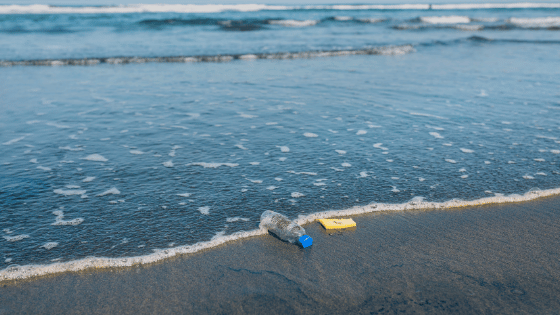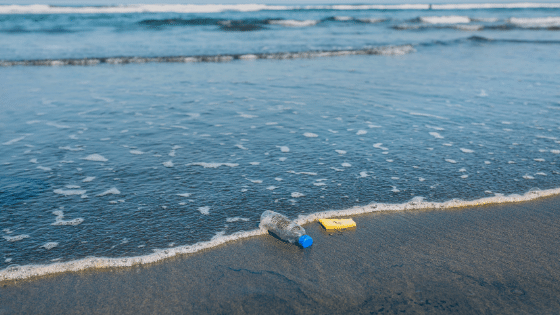How To Reduce Microplastics🤔 – Can We Recycle Them?
Energy Disrupter
How To Reduce Microplastics 🤔: as a regular reader of our blogs, you may think you know all you need to know or at least want to ever know about plastics, plastic recycling and whether plastics should be banned. However, I also think we should talk about microplastics, materials of an uberly minute size that can cause permanent damage of epic proportions. Of course, we should also debate how we can reduce those microplastics to prevent them from harming the environment.
>Download Now: Free PDF Business Owners Guide To Commingled Recycling Bin Services
As with many things plastic related, the story often gets worse even than it seemed at first.
We are all used by now to seeing scary pictures of the Great Pacific Garbage Patch, which is basically a floating mass of rubbish (the size of Texas) in the middle of the Pacific Ocean. As if that was not bad enough, the scary thing is that, apparently, the majority of plastic waste in the ocean is not even visible to the naked eye. We refer to these invisible pest materials as microplastics and should find ways to reduce them!
About Waster
Waster provides an entire suite of plastic recycling and other recycling services to Australian small and medium businesses. In particular, we provide commingled recycling bins for bottles and cans.
Check out our blogs on recycling plastic wrap and also on how there may be more plastic than fish in the sea by 2050.
S0, how can we reduce microplastics?
You may be wondering what are microplastics. And of course, you may also wonder about the lingering issue and how to reduce these microplastics.
According to Wikipedia: “Microplastics are very small pieces of plastic that pollute the environment. Microplastics are not a specific kind of plastic, but rather any type of plastic fragment that is less than 5 mm in length according to the U.S. National Oceanic and Atmospheric Administration (NOAA). They enter natural ecosystems from a variety of sources, including cosmetics, clothing, and industrial processes.”
Microplastics can be divided into two broad categories: those that are basically small pieces of plastic (i.e., think fibres, pellets, beads etc) or pieces of larger plastic that have broken down. Additionally, these can even happen in tea bags.
In our past blogs, we covered the issue with “biodegradable” plastics: plastics that basically just break down into microplastics and causes environmental havoc – which we have to reduce.


Why are microplastics in the ocean such a problem?
Microplastics are small and can be consumed by wildlife and also accumulate in their systems. They lack the size to immediately kill an animal or fish. But, they can consume lots over time. As they will not really rot away for hundreds of years, this continues to pose a major issue!
The long term effect of these microplastics in the ocean is uncertain and untested on both animal and human health in the long term. As humans consume fish caught in our oceans, this will become a pressing issue for us. The Conversation highlighted how microplastics are prevalent in nearly every kind of fish and seafood and even in sea salt on your table!
Microplastics pollution in the ocean is a huge issue. “Though there is debate over exactly how much microplastic is in the world’s oceans a 2015 study estimated that there were between 93 and 236 thousand metric tons of microplastics in the world’s oceans. “Additional research has found microplastics to account for 92% of plastic debris on the ocean’s surface.”
These problems impact island nations more than others. So to reiterate, we should exhaust all our efforts to reduce microplastics.
Do we have any solution to reduce microplastics?
To be honest, until recently, the answer was no. We still do not have a steady approach to reduce microplastics. However, Waster was very pleased to see an article recently about Google awarding a prize to a young Irish scientist for a discovery that could help tackle and reduce microplastics in the ocean.
According to the ABC:
“The procedure, inspired by an article written by physicist Arden Warner, involves using non-toxic iron oxide to clean up oil spills, according to Ferreira’s project study. When he tested the method on water containing a known concentration of microplastics, the plastic particles migrated into the oil phase, and the fluid was able to be removed using strong magnets, he wrote in his project synopsis.”
“He first produced microplastics to remove from the water and then extracted them using his method. Ten of the most common microplastics were used for the experiment.
“Ferreira concluded that his extraction method would remove 85% to 92% of microplastics in samples. The next step would be to scale the project up to an industrial level, he said.”
A visit to his local seaside area inspired the young scientist. And as result, he started to work on the project to reduce microplastics.
Conclusion on how to reduce microplastics
We can only do what is within our power to fight the problem of microplastics pollution in our oceans and waterways.
Obviously, we hope technological solutions like the one above are rolled out and actually work to reduce microplastics. But in the meantime, we need to make smart decisions.
The first step is to reduce the plastics we use (e.g., say no to single-use plastics likes straws, beads, containers etc.) to produce fewer microplastics. Only when the Government and businesses realise we do not want plastic everywhere will it reduce.
Secondly, practise correct waste management and recycling. Put waste in the correct bin, do not illegally dump and maybe even get out and take part in an ocean clean up day. Check out organisations like Cleanup for activities near you.
[embedded content]

















